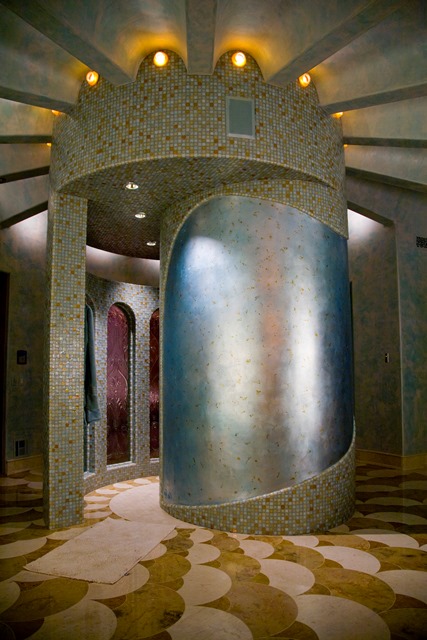
Creative Designs in Lighting, photo by Mark Greenawalt
At every juncture in the construction process, Arizona Structures, our Gilbert-based general contracting company, relies on trained professionals, craftsmen and artists. With lighting professionals, we depend on their technical expertise, design savvy –– even some magic. For 30 years, one of the premiere lighting professionals anywhere has been Walter Spitz’s Creative Designs in Lighting (CDL), Phoenix.
Lighting is both a science and an art, and we believe that professionally designed lighting is a critical part of what we call the Arizona Structures “Signature” build for new homes and renovations: the finest designs, craftsmen, materials and our quest for the exceptional.
These fine artisans at CDL transform architecture and landscapes through the magical qualities of light. The owners of retail spaces, office buildings, museums, restaurants and opera houses have realized for years the importance of not just good but exceptional lighting such as CDL provides.
On more than one occasion, we have been “stunned” to view what is obviously a home with a substantial investment in land, construction, design, furnishings, art, and yet the lighting is average, uninspired and mediocre. In contrast, we insist that our homeowners can easily control their interior environment, from bright and festive, to warm and soul enriching.
When Walter started his company, the primary focus was theatrical and event lighting, but his pioneering spirit quickly established CDL as a lighting design specialist in the residential and commercial fields.
He attributes much of the success to the advent of the Multifaceted Reflector light bulb, the MR16, available in multiple wattages, to vary brightness, and multiple beam spreads, to vary sizes of spot light, explains Mark Greenawalt, PE, LC, LEED BD+C, a CDL designer. “Walter used these lamps to ‘paint’ the architecture –– much as an artist uses paint to illustrate a canvas. Clients realized his art, and CDL flourished,” he says.
Books and guides are available on best lighting design practices, but knowing the right fixture, lamp and placement is an art form. The craft can be learned, but it may also take some natural talent and intuition. “When the aesthetic of a new architectural project matters, a professional lighting designer can help bring out the best in the final imagery,” Mark says.
Lighting does so much, if done correctly. For one: mood creation. “It’s easy to imagine the difference between a brightly lit cafeteria and dimly lit dining experience in a high-end restaurant. The architecture obviously plays a big part, but the lighting plays a critical part, too,” Greenawalt notes.
But lighting is more than aesthetics. Safety is always integral, and various codes establish minimum lighting levels. Building officials use light meters to verify these levels on commercial projects where the public safety is at risk. Other codes have been developed to conserve energy, and these require the lighting designer to minimize the wattages of lamps used and calculate the overall wattage to meet current limitations. This has been a key factor in the success of LED lamps, Greenawalt explains.
In addition to safety and energy, the lighting designer must also design within budget, which is very rarely unlimited.
Creative Designs has balanced all of these criteria on a variety of projects nationwide, including beautiful resorts, restaurants, office buildings and the homes of influential clients.
